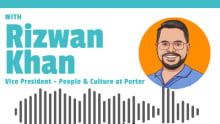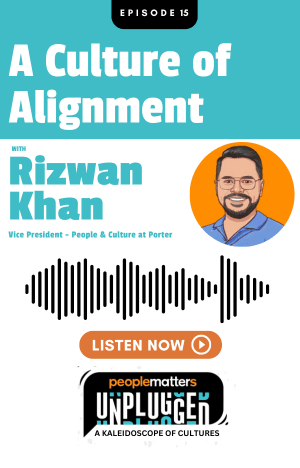The keys to thriving work culture, according to OC Tanner's Ty Brown

Employee recognition, skill-building, flexibility, and work-life balance are paramount features of global organizations thriving in this evolving landscape. A recent Global Culture Report by OC Tanner revealed, 'Organizations that don't provide any skill-building have a 76% lower chance of fostering a thriving workplace culture and a 72% lower chance of retaining employees who still want to work there a year from now.' The report also highlighted that four-fifths of the world’s workers (known as ‘the 80% group’) feel 'overlooked and underappreciated', despite being crucial to success. This group, despite being integral to the organization's success, faces substantial challenges, including limited access to essential tools, technology, and growth opportunities in their workplace. Furthermore, they often lack the autonomy and influence required to shape their own workplace experiences. This raises an important question: How are global organizations ensuring a thriving work culture amidst these challenges of managing a diverse workforce?"
In an exclusive conversation with People Matters, Ty Brown, Executive Vice President of International at OC Tanner company, shared key insights from the Global Culture Report 2024, encompassing different regions, including South East Asia and the Middle East.
Here are the edited excerpts:
Q. How do the distinctive cultural and social contexts of India, the Middle East, and Southeast Asia influence the development and customisation of your products and services in these regions?
Most of the organizations utilizing our employee recognition solutions have multinational operations. This is why our product development process incorporates a global perspective. Developing our products with this international outlook is a deliberate and central aspect of our approach. In addition, our decision-making process for product development is significantly influenced by our Global Culture Report. Our products need to possess a high degree of flexibility due to the significant variations in requirements of these global organisations. These differences extend beyond geography and encompass a wide range of needs. Our products are primarily geared towards recognizing and appreciating achievements and these organisations employ them for a myriad of reasons. This includes celebrating a corporate anniversary, recognizing an employee's milestone, expressing gratitude to the team, or a multitude of other purposes.
The critical divergence we encounter is not in the initial product development phase but in how the product is tailored for the specific needs of organisations in different regions. Whether it's a multinational organisation striving for effective recognition in a region like India or one of our Indian organisations with distinct goals, our focus shifts to configuring the product accordingly.
Our product development process is vital, and we use feedback from all regions to inform our decisions. However, the most substantial disparities emerge when we adapt the product to meet the specific requirements of a particular organisation, wherever they may be. For example, in India and the majority of Southwest Asia, celebrations tend to be more extravagant and vibrant. When working with Indian organisations, we collaborate to develop solutions that might involve more colourful software or training managers to be more assertive in recognition efforts.
In conclusion, while the initial product development is essential, the real distinguishing factor is the way the product is utilized and adapted to meet the distinct requirements and cultural intricacies of organisations across the various regions.
Q. As you delve into the Global Culture Report, what notable distinctions and commonalities have you identified in the marketing landscapes of India, the Middle East, and Southeast Asia? How does the distinctive cultural and social backdrop of each region impact the strategies that businesses employ in these areas?
The marketing landscape is undergoing significant changes, and this transformation extends far beyond India and Southeast Asia. It's a global phenomenon, with the pandemic being a key catalyst for reshaping the business environment. This shift is marked by a heightened focus on diversifying supply chains, particularly evident in Southeast Asia.
Additionally, a worldwide demographic shift is occurring, primarily driven by an ageing population. The consequences of this shift ripple across the business world, and these effects can be diverse and unique depending on the geographical location. The evolving nature of the marketing and business landscapes underscores that there is no one-size-fits-all approach. Each region has its distinct dynamics. What's effective in Indonesia may not yield the same results in Malaysia, and the market dynamics in Malaysia are distinct from those in India, which, in turn, differ from the UAE.
As partners to multinational companies, our responsibility is to remain vigilant in understanding and adapting to these ever-evolving trends. We must ensure that our solutions are not just up-to-date but also tailored to the specific needs of different organisations in their respective locations.
Q. Could you provide us with more information about the Global Culture Report that you launch annually?
The genesis of our Global Culture Report dates back approximately 10 to 15 years ago. It all began with a simple request I made to our international teams, particularly the international group, to help comprehend the nuances of recognition across diverse cultures. Initially, the aim was solely internal, to better assist organisations in understanding how to effectively implement recognition and what practices were culturally appropriate. In those early reports, a compelling revelation emerged. While it might not strike everyone as remarkable, it was clear that there existed a universal desire for appreciation worldwide.
The act of saying "thank you" transcended cultural boundaries; there was no culture where people didn't appreciate being thanked. However, how gratitude was expressed varied significantly from one culture to another. For example, in Japan, singling out an individual employee for praise could prove overwhelming because of their collective culture. In contrast, the United States embraced individual recognition and praise.
This revelation marked the humble beginning of our journey. It laid the foundation for an exploration of group recognition versus individual recognition and what constituted effective recognition practices across cultures. As time passed, the demand for guidance on effective recognition became so immense that the scope of our report expanded beyond recognition itself. Organisations began seeking assistance in understanding and navigating the intricacies of cultural transformation on a global scale. The report transitioned from being solely about recognition to encompassing broader cultural trends worldwide.
The current iteration of our report reflects this evolution. It has transcended recognition to encompass insights into the cultural trends impacting people in various regions, from Malaysia to Europe and North America. The report is now a valuable resource for companies seeking to stay attuned to these cultural shifts and respond appropriately. This year's report, for instance, delves into the significant trends stemming from the pandemic, focusing on the 80% of employees labelled as critical workers. These frontline employees, who continued to work during the pandemic, are now influencing workplace culture in notable ways. As discussions around office work, remote work, and flexibility unfold, it's essential not to forget the unique needs of these employees, who may require flexibility to care for sick family members or children.
The Global Culture report has transformed over the years from a guide to recognition into a comprehensive resource for understanding and navigating cultural dynamics, making it an invaluable asset for organisations.
Q. As we look ahead, how do you anticipate the marketing landscapes in India, the Middle East, and SEA evolving in the coming years, and what implications does this have for O.C. Tanner's work in these regions? What advice or recommendations would you offer to global businesses looking to establish or expand their presence in these unique and diverse markets?
A viewpoint on global enterprises aiming to establish themselves in this region: In simple terms, if they haven't already explored this market, they could be making a substantial mistake. In the Middle East region, in today’s context, the region is undergoing a period of disruption, particularly during these uncertain times. From a business perspective, the landscape is changing, and businesses are increasingly gravitating towards the United Arab Emirates (UAE). Saudi Arabia is also opening its doors to multinational firms, making it more attractive for foreign investment. Despite recent events, I still believe the Middle East is becoming more stable, focusing on geopolitical and business stability. This positive change is making it easier for foreign companies to operate in countries like the UAE, Bahrain, Kuwait, and other Gulf Cooperation Council (GCC) nations. Saudi Arabia appears to be leading the way in this endeavour, with the UAE serving as a notable example of how to create a conducive business environment. This evolving political, economic, and business stability in the region is creating a more favourable climate for multinational corporations to consider entering the Middle East.
I believe that the Middle East presents a substantial opportunity for a wide range of multinational corporations, including those from India.
Shifting our attention to India and the surrounding region, the journey of growth continues. From a business standpoint, it's intriguing to witness the Indian government's endeavours to fortify the manufacturing sector and attract a substantial number of manufacturing jobs. Historically, Southeast Asia has held a dominant position in manufacturing. The question now is whether India can effectively entice a significant share of these manufacturing opportunities. India's transition from an agrarian economy to a knowledge-driven one, with a strong emphasis on technical and professional roles, has been a notable transformation.
The pandemic has also played a pivotal role in reshaping the strategies of MNCs. They are now keen on diversifying their supply chains, reducing reliance on any single country. This shift presents India and Southeast Asia with an opportunity to position themselves as key players in diversified supply chains and economic landscapes.
In conclusion, the entire region, including India, is brimming with opportunities. It would be unfortunate for any multinational firm not already present in this dynamic environment. If they are not already on their way, they should seriously consider their expansion into this region.
Q. Please share key takeaways from the Global Culture Report that you think are particularly important for the HR community.
One significant takeaway from our recent conference, "Influence Greatness," where we gathered senior leaders from major corporations, was the emphasis on not overlooking the 80 per cent - the critical workers. During the conference, we unveiled our Global Culture Report, and it was striking how the predominant topic of discussion revolved around this 80 per cent and the need for flexibility.
It's important to clarify that flexibility, in this context, isn't the same as allowing employees to work from home a couple of days a week, as that may not be feasible for frontline workers. Their expectations aren't necessarily related to remote work arrangements. Instead, what these critical workers expect from their employers is empathy and flexibility. They might have responsibilities like caring for a sick child or an ailing parent.
What struck me most during these conversations was the tone – the resounding message was the importance of not forgetting the 80 per cent. The key is to be flexible in a manner that genuinely resonates with them and is meaningful in their unique circumstances.













